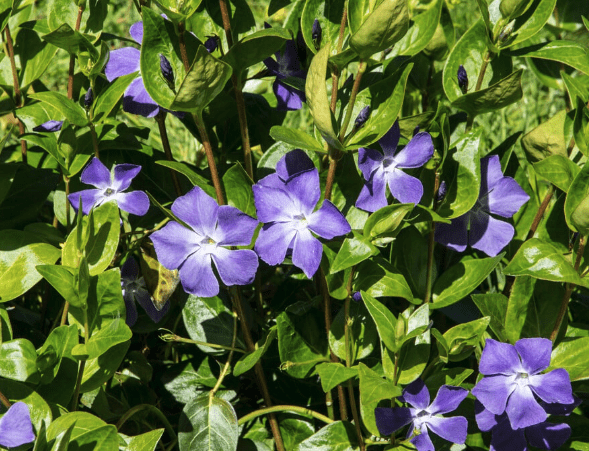
Greater periwinkle (Vinca major)
Greater periwinkle, also known as Blue periwinkle, Big periwinkle
Greater periwinkle (Vinca major) is an evergreen ground cover known for its attractive lavender flowers and glossy, deep green leaves. To prevent it from overtaking your garden while still enjoying its beauty, consider the following methods:
1. **Container Gardening**: Grow Vinca major in hanging baskets or window boxes to keep it contained and manageable.
2. **Use Barriers**: Install root barriers if planting in the ground to limit its spread.
3. **Regular Pruning**: Trim the plant frequently to control its growth and prevent it from spreading too aggressively.
4. **Thick Mulching**: Apply a substantial layer of mulch to suppress its tendency to spread.
5. **Strategic Location**: Plant it in controlled areas like along pathways or patios where you can easily monitor and manage its growth.
These strategies will allow you to enjoy the ornamental appeal of Vinca major without it becoming invasive in your garden.
Key Facts About Greater periwinkle
Attributes of Greater periwinkle
Scientific Classification of Greater periwinkle
Toxicity
Golden pothos contains a chemical called calcium oxalate, which is mildly toxic to humans if ingested or if the skin comes into significant physical contact with its sap. Symptoms of ingesting golden pothos may include eczema (itchy, red, swollen, irritated skin), burning, inflammation of the mouth, and vomiting. Contact with the sap can also cause dermatitis: an uncomfortable, itchy rash. Harm to humans is most likely to occur in children from accidental contact since this is a very common houseplant.